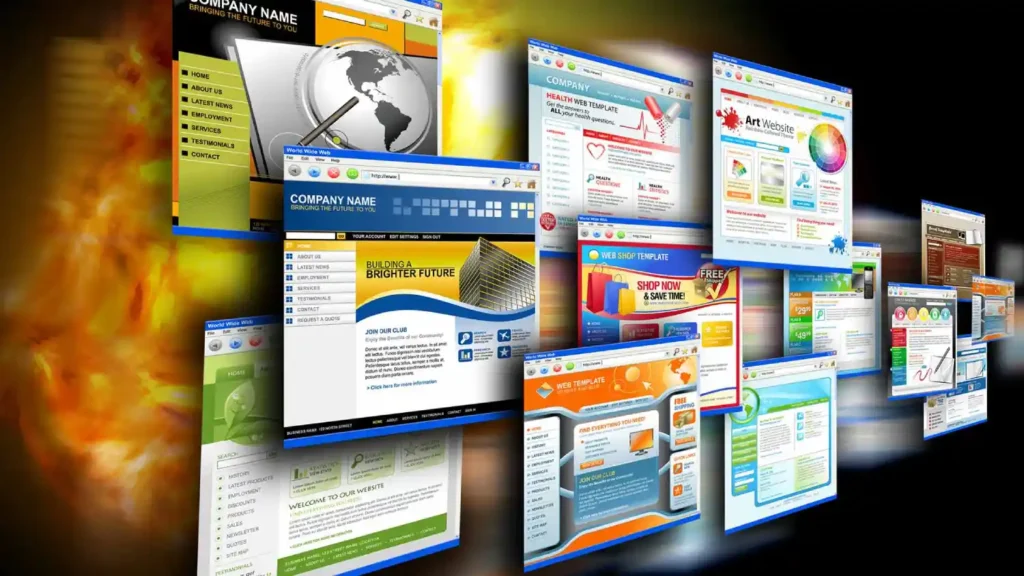Of course, everyone knows the term “website”, no question about it. However, on the off chance that you dig somewhat more profound, there is significantly more behind it: What is a web application, what is the contrast between a greeting page and a microsite, and when would it be a good idea for me, as an organization, depend on a blog or rather on a corporate site?
Here, we need to acquaint you with the six site types that fit the average use cases. We look at the advantages and disadvantages as well as concrete example projects that we have implemented in this form.
THE RIGHT WEBSITE TYPE FOR YOUR PROJECT
To give you an outline right all along, we made a pleasant infographic for you that effectively directs you to the right sort of site for your particular requirements:
In all actuality, the boundaries are not quite as obvious as the figure proposes. But it is enough for a good orientation to guess where the journey for your next project could go.
CORPORATE SITE
Of the relative multitude of types introduced here, the corporate site is the one that comes nearest to the first term “site,” and that is the reason we’ll begin with it. A city or non-profit website also falls into this category, which is why we also call this type an informational website.
The websites in this category are often extensive and contain information about the organization itself, the products and services offered, and various ways of making contact. In addition to static content, corporate websites often also contain dynamic elements such as news, contact forms, or reusable content blocks.
MICROSITE
The microsite is often simply a very small informational website. Microsites usually consist of only one to three main pages and have a relatively narrow focus on content. For example, a large technology manufacturer can set up its microsite with an individual domain for an innovative product to be able to advertise the new product appropriately and creatively. But even smaller companies or shops such as opticians or hairdressers are often represented on the Internet with a microsite, which is perfectly adequate for this purpose.
LANDING PAGE
By and by, the expressions “presentation page” and “microsite” are frequently utilized conversely, however stringently talking this isn’t completely right. A landing page is characterized by the fact that it consists of only one main page and always works towards a very specific goal that the visitor should achieve: the so-called call to action (CTA). This includes, for example, the generation of lead contacts or the sale of a single product presented. Microsites, then again, can effectively furnish guests with data.
Landing pages are particularly optimized for search engines. They are usually actively advertised, for example via social media campaigns or search engine advertising (SEA). The campaigns are also tailored to specific target groups to be able to address these target groups as precisely as possible on the landing page. The effectiveness of the landing page is monitored and constantly optimized by analytics tools. So, as you can see, unlike microsites, landing pages are typically specialized endpoints for advertising campaigns.
BLOG / MAGAZINE
Blogs or magazine-style websites are a good choice if the main focus is on editorial content that is very up-to-date. These platforms are optimized to regularly provide new content, which can also come from multiple authors. On account of websites, the cooperation choices for guests are especially significant to build the span of the posts, for instance by remarking or sharing on informal communities. The published content is also often multimedia, i.e. it consists not only of text but also to a large extent of images, videos, or social posts. There is usually static content, for example with background information on the authors or the operating company, but this is of little relevance.
Overall, blogs and magazines are characterized by a much higher dynamic and faster-changing content than corporate websites. The primary goal is not to inform the visitor about the company, but to present them with relevant and new content to create added value for them.
WEB APPS
A real software application running in the user’s browser is called a web app. In contrast to the other types discussed so far, web applications are working tools for the user that serve a specific purpose. They work similarly to a desktop application but can be used from any browser. Web apps are complex software products that are individually programmed.
ONLINE SHOP
It is easy to differentiate between online shops: the primary goal is the direct sale of products or services over the Internet. Shops are very complex because they have to map the entire ordering process (legally) securely and completely – this includes things like customer login, invoicing, returns, or e-mail notifications. A connection to ERP or CRM software is often required. In most cases, they are therefore based on specialized software such as WooCommerce, Magento, or Shopify, for which a suitable front end is designed and developed. Some shops also contain informational content, for example about the company behind it, but this is in the background

